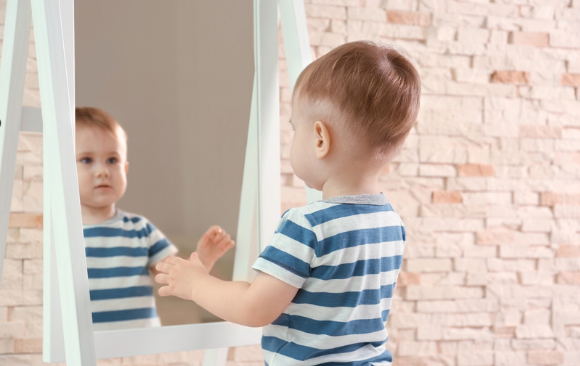One of the most common misconceptions about autism is the idea that people with the condition have a distinctive appearance. This stereotype has persisted for years, leading to harmful assumptions and biases. The truth is that this condition primarily affects communication, social interaction, and behavior, not physical features.

Distinct Facial Characteristics
Children with autism are often said to exhibit unique facial features that distinguish them from typically developing individuals. These facial features are considered characteristic traits of autism and have been observed in numerous studies. Some of these characteristics include:
- Unusually broad upper face, including wide-set eyes
- Shorter middle region of the face, including the cheeks and nose
- Broader or wider mouth and philtrum (the groove below the nose, above the top lip)
- Wide forehead and eyes
- Smaller midface
Research Findings
Studies exploring the link between facial morphology and autism have provided valuable insights into the condition. One study found significant differences in facial morphology in boys with autism compared to typically developing boys. These findings suggest that there may be some distinct facial features in children with autism.
Additionally, a study conducted by the University of Missouri revealed that individuals with autism tend to have a unique facial structure, characterized by a broader upper face and a shorter midface. This research further supports the notion that facial features can provide valuable clues about the underlying biology of autism.
While these studies have shed light on the link between facial features and autism, it’s important to note that facial characteristics alone cannot be used as a definitive diagnostic tool for autism. Autism is a neurodevelopmental disorder that requires a comprehensive assessment by qualified professionals.
Studies on Autism and Facial Features
To gain a deeper understanding of the link between autism and facial features, several studies have been conducted to explore this relationship. In this section, we will discuss three notable studies: the University of Missouri study, the 2019 Caucasian children study, and the 2022 computational models.
The University of Missouri Study
Researchers at the University of Missouri conducted a study using a camera system to simultaneously capture four images and create a 3-D model of each child. This study aimed to examine the facial features of children with autism. By comparing the facial characteristics of autistic children to typically developing children, the researchers sought to identify any distinct features associated with autism.
2019 Caucasian Children Study
In a 2019 study focused on Caucasian children, researchers investigated whether there were specific facial features associated with autism. The study found some support for the idea that individuals with autism may possess certain facial characteristics. These features included a decreased height of the facial midline. Yet, it is important to note that this study lacks reliability due to its specific focus on a single ethnic group.
2022 Computational Models
In 2022, a review of several computational models aimed at detecting autism using facial features was conducted. The research found that many of these models could detect autism with a high degree of accuracy, ranging from 86% to 95%. This demonstrates the potential of computational tools with facial detection capabilities to assist physicians or mental health clinicians in the diagnostic process.

Link Between Facial Morphology and Autism
The link between facial morphology and autism has been a topic of interest in research, as it may provide insights into the underlying biology of ASD. In this section, we will explore the link between facial morphology and autism, focusing on brain development differences and the correlation with behavioral traits.
Brain Development Differences
Research suggests that brain development differences in individuals with autism can contribute to distinct facial features. These differences may be attributed to alterations in neural connectivity and growth patterns during critical periods of development. Using physical markers to aid in autism detection is an emerging area of study, as differences in brain development could result in varying facial characteristics.
Masculine Traits Correlation
One study conducted in 2017 examined the facial features of prepubescent boys and girls with autism. The findings showed that when compared to their neurotypical peers, autistic boys and girls had more masculine facial features. This raises the possibility of a connection between increased testosterone exposure during pregnancy and ASD. Nevertheless, additional investigation is required to comprehend the correlation.

Insights into Autism Biology
Furthermore, exploring the biology of autism can provide valuable insights into the unique characteristics and traits associated with this condition. Researchers have delved into various aspects of autism, including the exploration of biological pathways and the presence of androgynous facial features.
Biological Pathways Exploration
Scientists have been studying the biological pathways associated with autism to gain a better understanding of the condition. Genetic studies have revealed genetic variations that are more prevalent in individuals with autism. These genetic factors play a role in brain development and the functioning of neural networks.
Additionally, researchers have observed differences in brain structures and connectivity patterns in individuals on the autism spectrum, further supporting the biological basis of autism. Understanding the biological pathways involved in autism can potentially lead to the development of targeted interventions and strategies.
Androgyny Account in Autism
The development of androgynous facial features in autistic individuals is another intriguing aspect of autism biology. Studies have indicated that children exhibiting high levels of autistic-like traits, both male and female, typically have more androgynous facial features than children with fewer autistic traits.
Androgynous facial features refer to facial characteristics that are not distinctly masculine or feminine. This phenomenon supports the androgyny account in autism. The androgynous features observed in individuals with autism may be influenced by underlying genetic factors related to the condition.
While the presence of androgynous facial features is not a definitive diagnostic marker for autism, it provides researchers with additional clues about the biological underpinnings of the condition. Further investigations may contribute to the development of more accurate diagnostic strategies.
Ultimately, it’s important to remember that there’s no single “look” associated with the condition. At Hello ABA, we focus on understanding and addressing the specific challenges faced by each child with autism. Our ABA therapy in Maryland is designed to build essential skills and promote independence.
Contact us today to learn how we can support your child’s journey!
Sources






